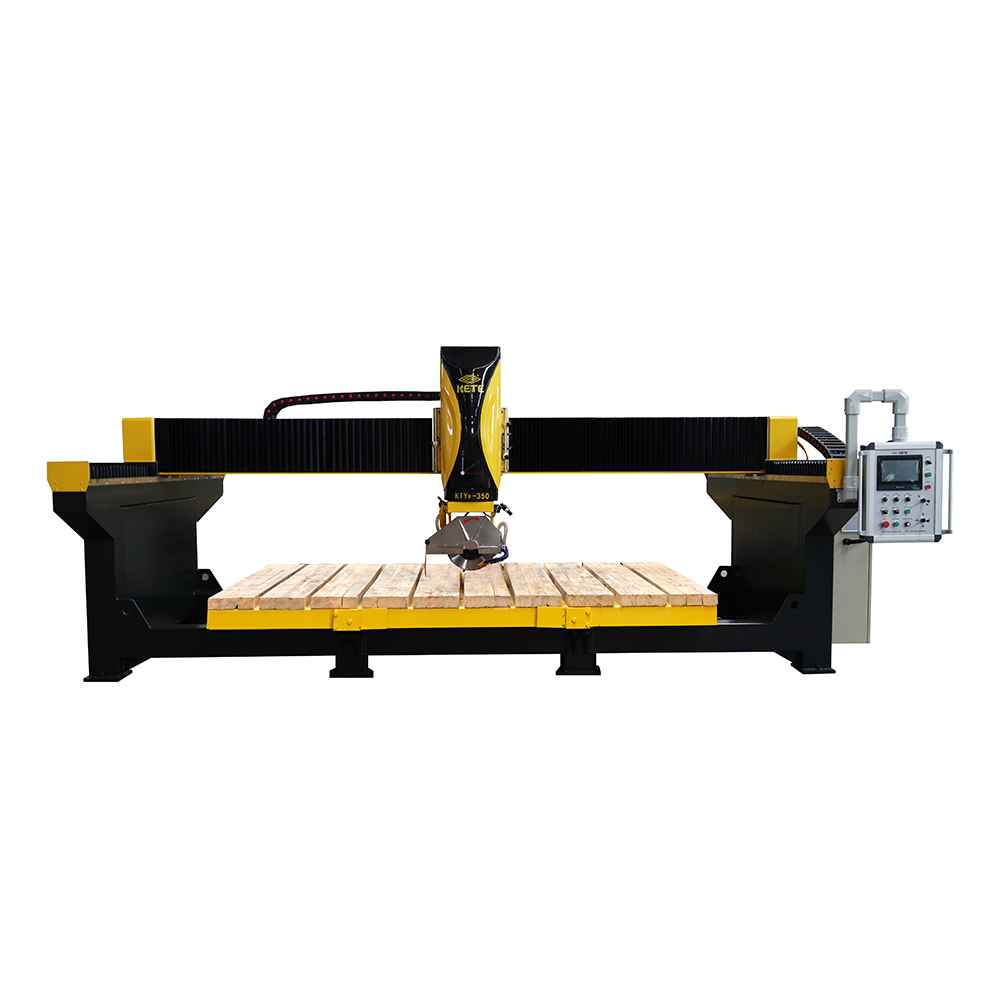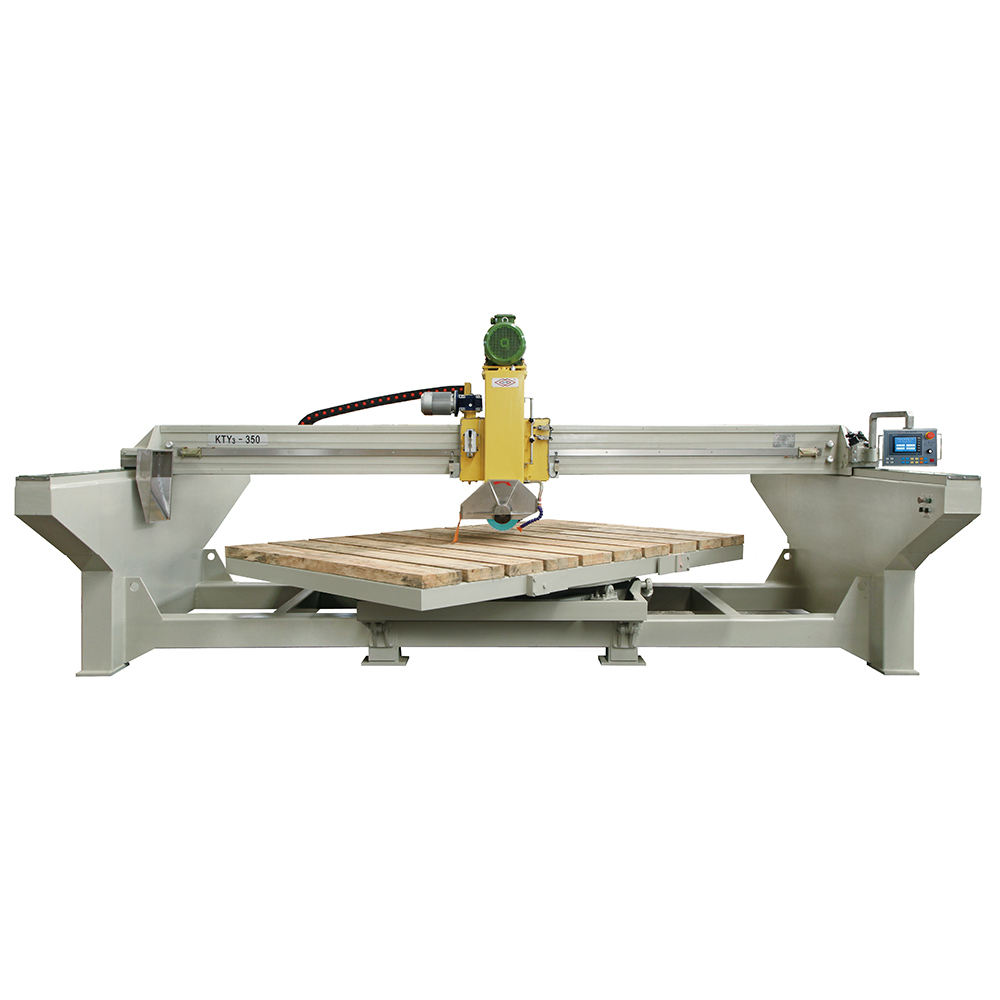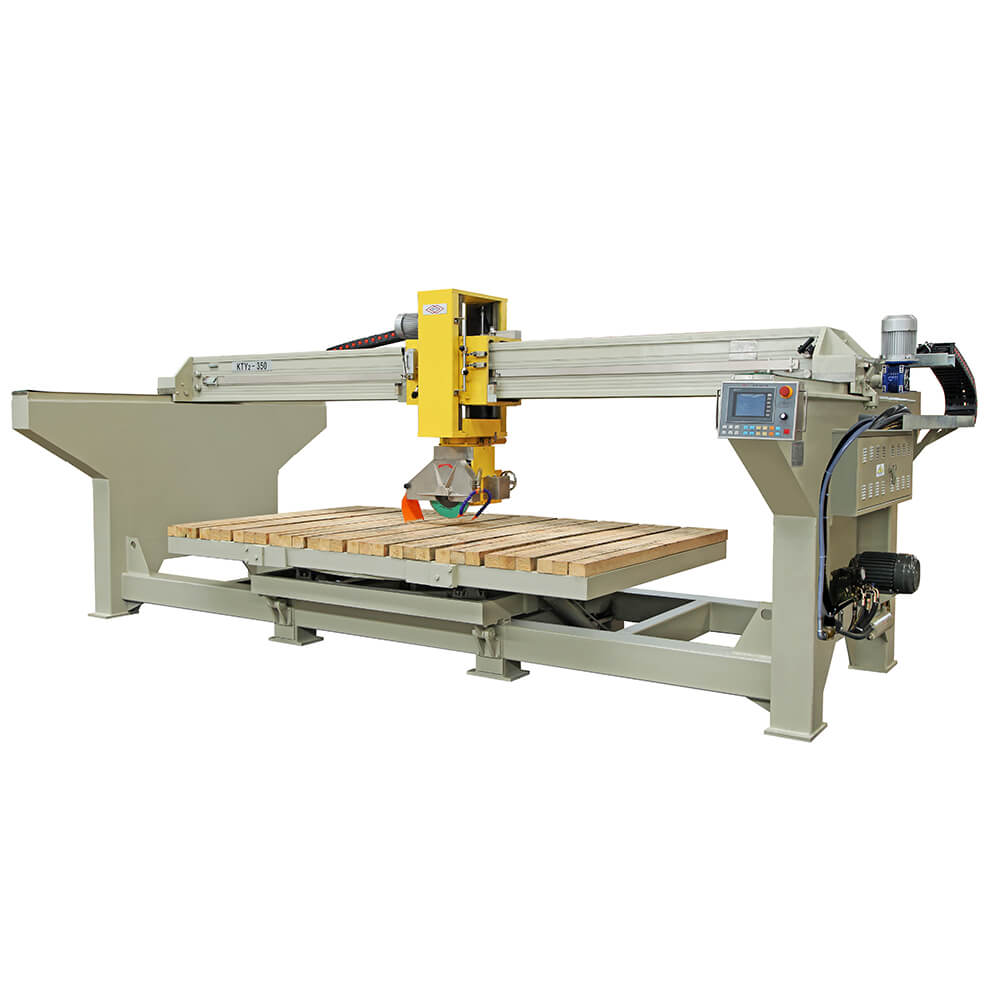A stone bridge saw is a significant investment and a cornerstone of any fabrication shop. To protect this investment, ensure consistent cutting accuracy, and guarantee operator safety, a disciplined and proactive maintenance routine is essential. Proper care not only extends the machine's lifespan but also maximizes productivity and minimizes costly downtime.
Here is a practical guide to the key areas of bridge saw maintenance.
1. The Critical Role of Regular Cleaning
Cleaning is the most frequent and fundamental maintenance task. After every use, the machine should be thoroughly cleaned to remove stone dust, slurry, and debris.
-
Why it matters: Accumulated residue can clog moving parts, interfere with measurements, and lead to inaccurate cuts. It can also cause premature wear on components and create a slipping hazard.
-
Best practices: Regularly remove all accumulated material from the cutting area, guide rails, and other machine parts. Use appropriate tools like brushes, air blowers, and scrapers. Avoid using high-pressure water on sensitive components unless the machine is specifically designed for it.
2. Ensuring Peak Performance Through Lubrication
All moving parts require proper lubrication to function smoothly and resist wear.
-
Why it matters: Lubrication reduces friction, prevents overheating, and protects components like bearings, gears, and sliding mechanisms from premature failure. A well-lubricated machine runs more smoothly and quietly.
-
Best practices: Always follow the manufacturer's guidelines. Use the recommended types of lubricants and adhere to the specified lubrication intervals. Over-lubrication can be as detrimental as under-lubrication, attracting more dust and debris.
For enhanced convenience and consistent care, many of our advanced Kete CNC models, such as the KTNC-0425S and KTNC-0545Y, are equipped with automated lubrication systems. These systems feature one-touch oiling functions that ensure critical moving parts receive the correct amount of lubricant with minimal operator effort, virtually eliminating the risk of human error and guaranteeing optimal machine performance around the clock.
3. Blade Maintenance: The Key to Precision and Safety
The blade is the heart of the cutting process, and its condition directly impacts the quality of your work and the safety of your operators.
-
Why it matters: A dull or damaged blade will produce chipped, inaccurate cuts, put excessive strain on the motor, and significantly increase the risk of dangerous kickbacks or breakage.
-
Best practices: Visually inspect the blade before each use for signs of wear, cracks, or segment loss. Ensure it is sharp and in good condition. Replace blades promptly when they no longer perform optimally. Using the correct blade for the specific material being cut is also crucial.
4. Vigilant Routine Inspection
A proactive inspection can identify small issues before they escalate into major, expensive problems.
-
Why it matters: Catching a loose bolt, a slightly misaligned guide, or a worn belt early can prevent a catastrophic failure that halts production.
-
Best practices: Regularly inspect the entire machine. Check the cutting blades, belts, motors, and structural components. Look for any signs of wear, damage, or misalignment. Pay special attention to any loose, cracked, or damaged parts that could affect performance or safety.
5. Electrical System Safety Check
The electrical system powers your machine and must be kept in safe working order.
-
Why it matters: Faulty electrical components are a serious safety hazard, risking electric shock, short circuits, or fire. They can also lead to unpredictable machine behavior.
-
Best practices: Regularly check switches, control panels, and power cords for any signs of damage, such as fraying, cracks, or burn marks. Ensure all connections are tight and secure. Any issues should be addressed immediately by a qualified technician.
6. The Importance of Professional Servicing
While daily and weekly maintenance are the operator's responsibility, professional servicing provides a deeper level of care.
-
Why it matters: A certified technician has the expertise and tools to perform advanced calibrations, diagnose hidden issues, and conduct preventative maintenance that is beyond the scope of routine checks.
-
Best practices: Schedule professional servicing at regular intervals as recommended by the manufacturer. This ensures that potential problems are identified and resolved proactively, safeguarding your machine's long-term health and precision.
Embrace the Future of Maintenance with Kete IoT: Modern maintenance is data-driven. Kete Machinery integrates advanced IoT (Internet of Things) capabilities into our equipment. By connecting your machine to the dedicated KETE APP, you gain unprecedented insight into your equipment's health. Monitor real-time operation statistics, track machine usage, and most importantly, receive intelligent, data-based alerts for maintenance tasks. The system analyzes actual operating hours and conditions to remind you when it's time for lubrication, blade changes, or a professional service, transforming maintenance from a reactive chore into a proactive, streamlined strategy.
A consistent and thorough maintenance regimen is not an optional expense but a vital practice for any successful stone fabrication business. By integrating these six pillars—Cleaning, Lubrication, Blade Care, Inspection, Electrical Checks, and Professional Servicing—you will ensure your bridge saw operates at peak performance, delivers flawless cuts year after year, and provides a safe working environment for your team. Investing in machinery with built-in maintenance features, like our Kete CNC models with automated lubrication, further simplifies this process, enhancing both reliability and productivity. Furthermore, by choosing a Kete smart machine with IoT connectivity, you equip your workshop with intelligent oversight. The KETE APP puts the power of predictive maintenance in your pocket, ensuring your business stays ahead of issues and operates at peak efficiency.




